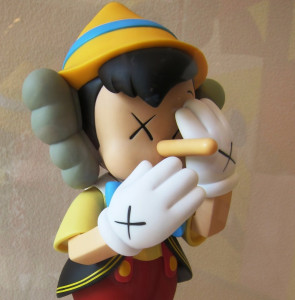 In the children’s book The Velveteen Rabbit, the toy rabbit just wants to be “real”. Just like Pinocchio, who desperately wants to be a real boy. And in a book I just read, the main character observes about another character, “He was talking for real. It was strange.” So what is meant by “real”? And how do you tell between what is real and what isn’t real?
In the children’s book The Velveteen Rabbit, the toy rabbit just wants to be “real”. Just like Pinocchio, who desperately wants to be a real boy. And in a book I just read, the main character observes about another character, “He was talking for real. It was strange.” So what is meant by “real”? And how do you tell between what is real and what isn’t real?
The answer depends largely on what the ‘real’ is referring to. The definition of real can be:
Not organic, living, breathing as in artificial: “Is that (Christmas tree, floral arrangement) real?”
Authentic, but not wholly possessed by the person: “Is that (hair) real?”
Fake, counterfeit: “Is that (designer handbag, diamond) real?”
Disingenuous, insincere: “Is she for real?”
Exaggerated, deluded: “Get real!”
And the second part of what’s real has to do with the purpose for needing the thing to be real.
When the item under consideration is an object, what does it matter if the Christmas tree/floral arrangement/hair extensions/designer handbag/diamond is real or not, especially if you can’t tell the difference to the naked eye? If the purpose is to beautify the surroundings, and that is accomplished by artificial means, what difference does it make?
But somehow value and self-worth get tied to whether an object is ‘the real deal’ or a ‘fabulous fake’, where there should be no such connection. “I enjoy this because it is beautiful and it makes me happy to look at it” should have nothing to do with price paid and feelings of self-value, and yet it just about always does. In our culture, the fabulous fake is second fiddle to the real deal, and those feelings are transferred from the object to the owner.
How about when it is not an object but a person or their behavior that is being questioned for being real or not? Now the question of reality is one of perception – what’s real to one person isn’t always the same as what’s real to another person. Our individual reality is colored by our history of personal experience and our reaction to events, which are not shared by any other person exactly. Even people sharing the same event have two different realities, based on their unique filters of the experience.
So which version is the real one? What is the ‘truth’? Of course, they both are. Truth and what’s real is different for each person. And understanding THAT reality for what it is would solve a whole lot of communication problems, especially problems that arise around accusations of deception when it might simply have been different realities colliding.
COMMUNICATION TAKEAWAY: We all live in our own reality, our own versions of the truth, which by definition is different for each person because we are all unique individuals. Our personal experience filters our view of events; there is no universal reality shared by everyone. Yet we believe, we hope, we fervently wish there was one reality, so we can declare to others, “See, I TOLD you I was right!”, which is code for “my view is the truth, verifying my sanity and ability to function well in this world”. Our ego needs to be right, our self-esteem needs continual boosting, our super-ego needs reinforcing. But our communication takes a hit when we don’t allow that others need the same things.
